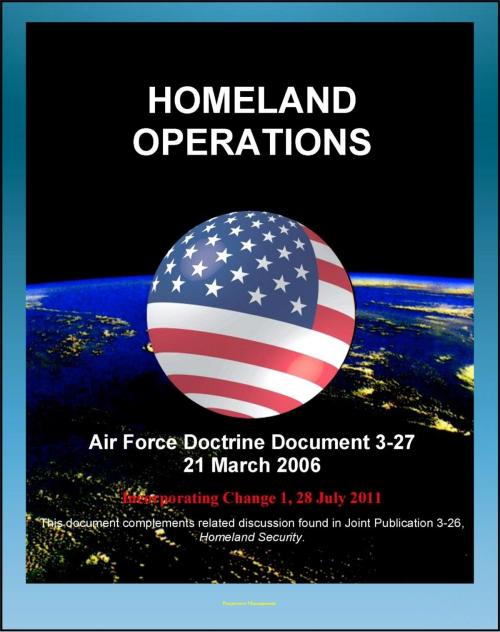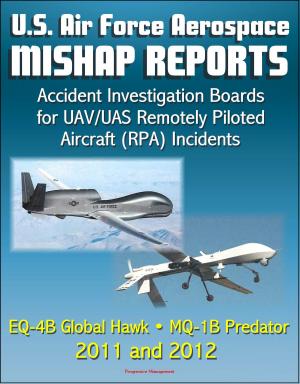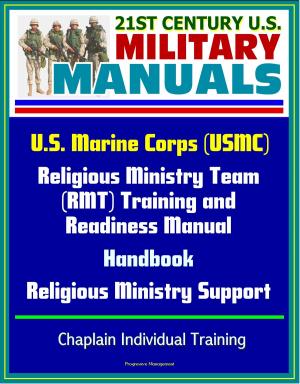Air Force Doctrine Document 3-27: Homeland Operations - NORAD, National Response Plan (NRP), Air Force National Security Emergency Preparedness Agency, Air National Guard (ANG), Posse Comitatus Act
Nonfiction, History, Military, Aviation| Author: | Progressive Management | ISBN: | 9781476494661 |
| Publisher: | Progressive Management | Publication: | April 16, 2012 |
| Imprint: | Smashwords Edition | Language: | English |
| Author: | Progressive Management |
| ISBN: | 9781476494661 |
| Publisher: | Progressive Management |
| Publication: | April 16, 2012 |
| Imprint: | Smashwords Edition |
| Language: | English |
This document describes how our Air Force organizes and employs air and space power in operations in the homeland. We have superb air and space warfare doctrine addressing air and space expeditionary forces and combat operations. Homeland operations doctrine complements those documents. It focuses on how we support civilian agencies through the appropriate combatant commander in a variety of operations, such as neutralizing terrorist threats, responding to natural disasters, and supporting the traditional mission of homeland defense. Concepts such as centralized control/decentralized execution and unity of effort are just as relevant in the civil support arena as they are in warfighting. The complexities of the interagency process, the nexus between law enforcement and national security, and other issues raised when we conduct operations in the homeland create seams that we must address. This document represents a significant first step to codify our best practices in conducting operations in the homeland.
The terrorist attacks of 11 September 2001 are a stark example that some nations, organizations, groups, and individuals will implement extraordinary measures to further their cause and bring death and destruction to the United States. It is imperative that the Air Force prepare fully to detect, preempt, respond to, mitigate, and recover from the full spectrum of threats to the homeland, to include natural emergencies, nation-state aggression, terrorist attacks, and other man-made events.
Make no mistake about it: when the nation calls, the Air Force will respond - and we will respond quickly and effectively. We have much to contribute to the security of the homeland, regardless of the nature of the event. This includes the defense of the homeland through air and space operations, whether in air, space, or cyberspace.
While civilian sector and federal agencies possess substantial assets and capabilities to respond to these domestic emergencies, the Air Force, with its inherent speed and through its distinctive capabilities, stands ready to provide full-spectrum support to these civil agencies. The Air Force brings specialized assets to support the Department of Justice and the Federal Bureau of Investigation during the crisis portion of a terrorist event. We have capabilities that contribute to the Department of Homeland Security's and their Federal Emergency Management Agency's efforts at incident management, ranging from disaster relief to scenarios involving chemical, biological, radiological, nuclear, and high-yield explosive devices.
Contents: Chapter One - Introduction To Homeland Operations * Chapter Two - Force Presentation And Organization Of Forces * Chapter Three - Homeland Defense And Defense Support Of Civil Authorities * Chapter Four - Emergency Preparedness
This document describes how our Air Force organizes and employs air and space power in operations in the homeland. We have superb air and space warfare doctrine addressing air and space expeditionary forces and combat operations. Homeland operations doctrine complements those documents. It focuses on how we support civilian agencies through the appropriate combatant commander in a variety of operations, such as neutralizing terrorist threats, responding to natural disasters, and supporting the traditional mission of homeland defense. Concepts such as centralized control/decentralized execution and unity of effort are just as relevant in the civil support arena as they are in warfighting. The complexities of the interagency process, the nexus between law enforcement and national security, and other issues raised when we conduct operations in the homeland create seams that we must address. This document represents a significant first step to codify our best practices in conducting operations in the homeland.
The terrorist attacks of 11 September 2001 are a stark example that some nations, organizations, groups, and individuals will implement extraordinary measures to further their cause and bring death and destruction to the United States. It is imperative that the Air Force prepare fully to detect, preempt, respond to, mitigate, and recover from the full spectrum of threats to the homeland, to include natural emergencies, nation-state aggression, terrorist attacks, and other man-made events.
Make no mistake about it: when the nation calls, the Air Force will respond - and we will respond quickly and effectively. We have much to contribute to the security of the homeland, regardless of the nature of the event. This includes the defense of the homeland through air and space operations, whether in air, space, or cyberspace.
While civilian sector and federal agencies possess substantial assets and capabilities to respond to these domestic emergencies, the Air Force, with its inherent speed and through its distinctive capabilities, stands ready to provide full-spectrum support to these civil agencies. The Air Force brings specialized assets to support the Department of Justice and the Federal Bureau of Investigation during the crisis portion of a terrorist event. We have capabilities that contribute to the Department of Homeland Security's and their Federal Emergency Management Agency's efforts at incident management, ranging from disaster relief to scenarios involving chemical, biological, radiological, nuclear, and high-yield explosive devices.
Contents: Chapter One - Introduction To Homeland Operations * Chapter Two - Force Presentation And Organization Of Forces * Chapter Three - Homeland Defense And Defense Support Of Civil Authorities * Chapter Four - Emergency Preparedness















